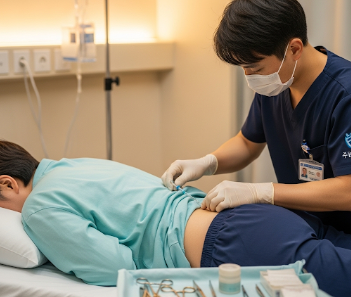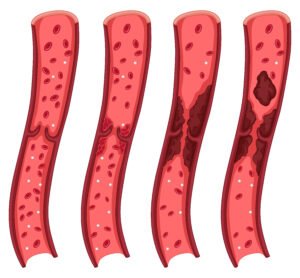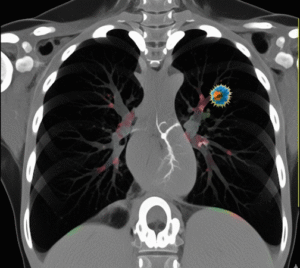Overview
Epidural anaesthetic is a regional anesthesia technique commonly used to provide pain relief during surgery, labor, or chronic pain management. Unlike general anesthesia, it numbs only the lower part of the body, allowing patients to remain awake while experiencing minimal discomfort.
In South Korea, epidural anesthesia is performed in advanced hospitals and surgical centers with highly trained anesthesiologists. The procedure is supported by state-of-the-art monitoring equipment, ensuring safety, accurate drug administration, and effective pain control.
What is an Epidural Anaesthetic?
An epidural anaesthetic involves injecting local anesthetic or analgesic medication into the epidural space surrounding the spinal cord. This blocks pain signals from nerves, resulting in temporary numbness and pain relief in the lower body.
Common uses include:
- Labor and childbirth → alleviates pain during delivery
- Surgical procedures → lower abdominal, pelvic, or lower limb surgeries
- Chronic pain management → for conditions like herniated discs or lower back pain
- Postoperative pain control → enhances recovery and comfort
Epidurals are adjustable and reversible, allowing precise control over the level and duration of anesthesia.
What are the benefits?
Epidural anaesthesia offers multiple advantages:
- Targeted pain relief → numbs only the area required
- ➤ Reduced need for general anesthesia → lower risk of systemic complications
- ➤ Patient remains awake and alert → beneficial during labor or minor procedures
- ➤ Adjustable pain control → continuous infusion or intermittent dosing possible
- ➤ Faster postoperative recovery → improved mobility and reduced opioid use
- ➤ Widely performed in Korea with advanced monitoring for patient safety
Procedure Details
1) How should I prepare for Epidural Anaesthetic?
Preparation is essential for safety and effectiveness:
- Medical evaluation → review medical history, allergies, and current medications
- Medication adjustment → blood-thinning drugs may need temporary cessation
- Hydration → drink water unless instructed otherwise to prevent hypotension
- Positioning instruction → patients may need to sit or lie on their side during the procedure
- Informed consent → discussion of procedure, benefits, risks, and alternatives
2) What happens during the procedure Epidural Anaesthetic?
The procedure typically takes 10–20 minutes:
- Patient positioning → sitting or lying on the side to expose the lower back
- Sterilization and local anesthetic → skin is cleaned, and local anesthetic is injected to numb the area
- Epidural catheter insertion → a thin needle is used to access the epidural space, followed by placement of a flexible catheter
- Test dose → a small amount of anesthetic is injected to confirm placement
- Continuous or intermittent infusion → medication is administered via catheter to provide ongoing pain relief
- Monitoring → blood pressure, heart rate, and oxygen levels are continuously monitored
In Korea, epidurals are administered by experienced anesthesiologists with advanced imaging and monitoring equipment for maximum safety and precision.
3) What happens after an Epidural Anaesthetic?
- Immediate monitoring → patients are observed for blood pressure changes, numbness, or side effects
- Pain relief onset → numbness typically occurs within 10–20 minutes
- Activity restriction → patients may need assistance until leg strength returns
- Catheter removal → if used for postoperative pain, it is removed once pain control is no longer needed
- Follow-up → monitor for headaches, infection, or prolonged numbness
Risks / Benefits
Potential Risks:
- Mild backache or soreness at the injection site
- Temporary low blood pressure or dizziness
- Headache (post-dural puncture headache, rare)
- Rare complications → infection, nerve injury, or allergic reaction
Key Benefits:
- Effective, targeted pain relief without full-body anesthesia
- ➤ Improved comfort during labor or surgery
- ➤ Reduced opioid use postoperatively
- ➤ Adjustable and reversible dosing
- ➤ High success rates and safety in Korea with trained anesthesiologists
Recovery and Outlook
- Immediate recovery → numbness and tingling gradually subside after medication is stopped
- Short-term effects → mild back soreness or headache may occur
- Long-term outlook → safe for repeated use in labor or chronic pain management
- In Korea, patients benefit from comprehensive monitoring, rapid response to side effects, and expert anesthesia teams, ensuring safe and effective outcomes
When To Call the Doctor
Contact your healthcare provider if you experience:
- Severe headache not relieved by rest or medication
- ➤ Persistent numbness or weakness in the legs
- ➤ Signs of infection at the injection site (redness, swelling, discharge)
- ➤ Severe back pain or neurological symptoms
- ➤ Allergic reaction symptoms such as rash, itching, or difficulty breathing
Prompt evaluation prevents complications and ensures safe recovery.
Best Korea Option / Process
South Korea offers advanced anesthesia care for epidural procedures:
- Expert anesthesiologists trained in obstetric, surgical, and chronic pain epidural techniques
- State-of-the-art monitoring equipment → continuous blood pressure, oxygen, and neurological monitoring
- Comprehensive care → pre-procedure consultation, anesthesia administration, and postoperative follow-up
- Patient-centered approach → safe, comfortable, and minimally invasive pain management
- International patient services → multilingual support and streamlined hospital experience
Patients choosing Korea for epidural anesthesia can expect high safety, effective pain control, and professional monitoring, making it a top choice for regional anesthesia.













